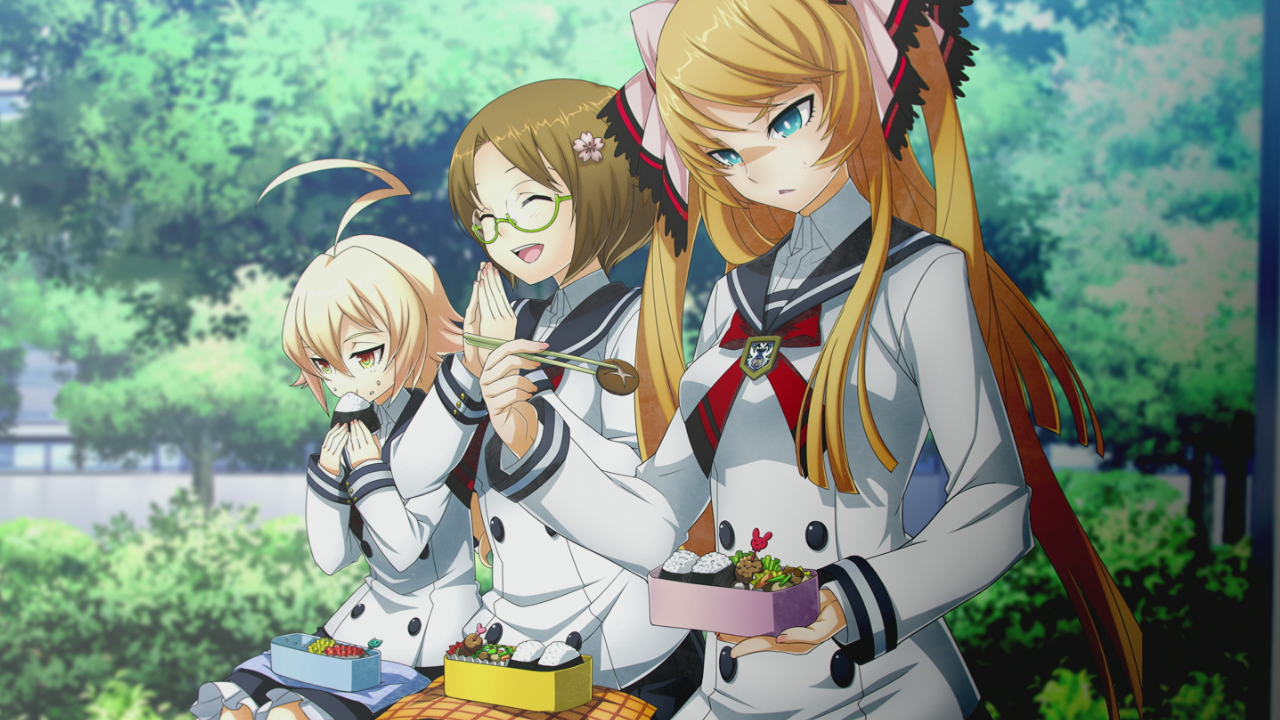Review by Matt S.
I’m not really surprised that someone, somewhere had the idea to build a visual novel around the BlazBlue franchise. After all, in between the brief and furious combat in these fighting games there’s so much dialogue that the “Story” mode might as well be a visual novel.
And so we have Xblaze; a BlazBlue game sans the fighting bits, and yet it doesn’t feel like it’s missing anything with that omission. It’s a strange kind of visual novel, though, with a odd science fiction-style plot that is fun and engaging, but more akin to a page turner than a literary classic.
We’ve been privileged with a couple of great visual novels so far this year, with publishers such as NISA taking on Danganronpa, and Aksys working on Hakuōki before Xblaze. While these publishers are of course niche they are of a higher profile than the tiny setups that were previously the only ones that would take a risk with a visual novel, and this is a trend I am very glad for indeed.
The quality of translation in these “high profile” visual novels is wonderful, and Xblaze continues the tradition in style. The narrative itself isn’t as elegant as Hakuōki, or as thematically complex as Danganronpa, but the characters and environments are nonetheless brilliantly realised, and I can’t recall single sentence that read awkwardly, which is always a risk when translating such disparate languages as Japanese and English. Moreover, the Aksys translators managed to ensure that the game maintained context from start to finish; it’s far too easy for a localisation outfit to literally translate sentences or entire paragraphs only for the end result to make no sense because the sentence is designed to exclusively a theme for the Japanese culture. I would love to compare Xblaze’s English translation to the Japanese version, because I imagine the work done here was excessive to ensure that it all makes sense.
This translation is supported by a very simple, but aesthetically enjoyable art style. Again to compare to recent visual novels, Hakuōki is more beautiful, but Xblaze works for the kind of people that enjoy anime or manga. We’re talking bright, clean lines and simple, colourful backgrounds. The background music is the weak link in terms of the game’s presentation, but hey, it’s a visual novel; do what I do when reading a real book and put your own music soundtrack on in the background.
Based on anime tropes as the game is, it’s worth noting that there are sequences that involve some light fan service. And, yes, there is a bathing scene. Aside from those moments Xblaze resists some of the more potentially offensive tropes. The female characters all have agency, for instance, even if there are a couple that I imagine will raise an eyebrow or two; people who were irritated by Samus’ subservience to male authority characters in Other M on the Nintendo Wii will chafe with some of Es’ characterisation, for instance, because she’s literally a robot that does as her male ranking commanders demand.
Because the story in Xblaze is happy to behave like a popular manga or anime narrative, it’s also frustratingly difficult to connect with on an intellectual level at times. The story starts off straightforward enough and slowly takes on more and more science fiction and fantasy elements as it progresses and further explains the BlazBlue universe, but it is a narrative that’s more interested in setting up epic conflicts and alliances and quests for power than it is with building up a philosophy or a deeper message to dig into. And that’s fine; Xblaze is a page turner and a load of fun for what it is, but it’s difficult to see this become the kind of classic that I fully expect the multi-faceted Danganronpa to become.
As this is a visual novel, interactivity is very minimal, but the game does offer multiple different narrative arcs and endings, based on how you experience the story. Within the game is a device called a TOi, which acts a bit like a mobile phone with an RSS feed – at certain points through the game you’ll be delivered a range of “news” articles to read. By reading certain articles, the in-game characters know about that event and optional story scenes that will be triggered based around it. If they don’t read the right articles, some bad things can happen as a result of not knowing the right information.
Unlocking all of the endings takes a bit of work – it’s like rereading the same book a dozen times, but thanks to the quality of the writing, they’re generally worth it. The narrative itself will make more sense if you’re an existing fan of the BlazBlue series, but it’s a prequel to the events of those games and so newcomers will be able to get by with only a few moments of confusion.
Xblaze didn’t have the same emotional impact on me as games like Hakuōki have, and I wasn’t as invested in the narrative as I was with Danganronpa, but anyone who has played a BlazBlue game knows that the writers behind the series are quality, and confident enough in their craft to put more energy into the plot than most fighting games get. As an extension of that confidence, Xblaze is a worthwhile experience indeed.
– Matt S.
Editor-in-Chief
Find me on Twitter: @digitallydownld











